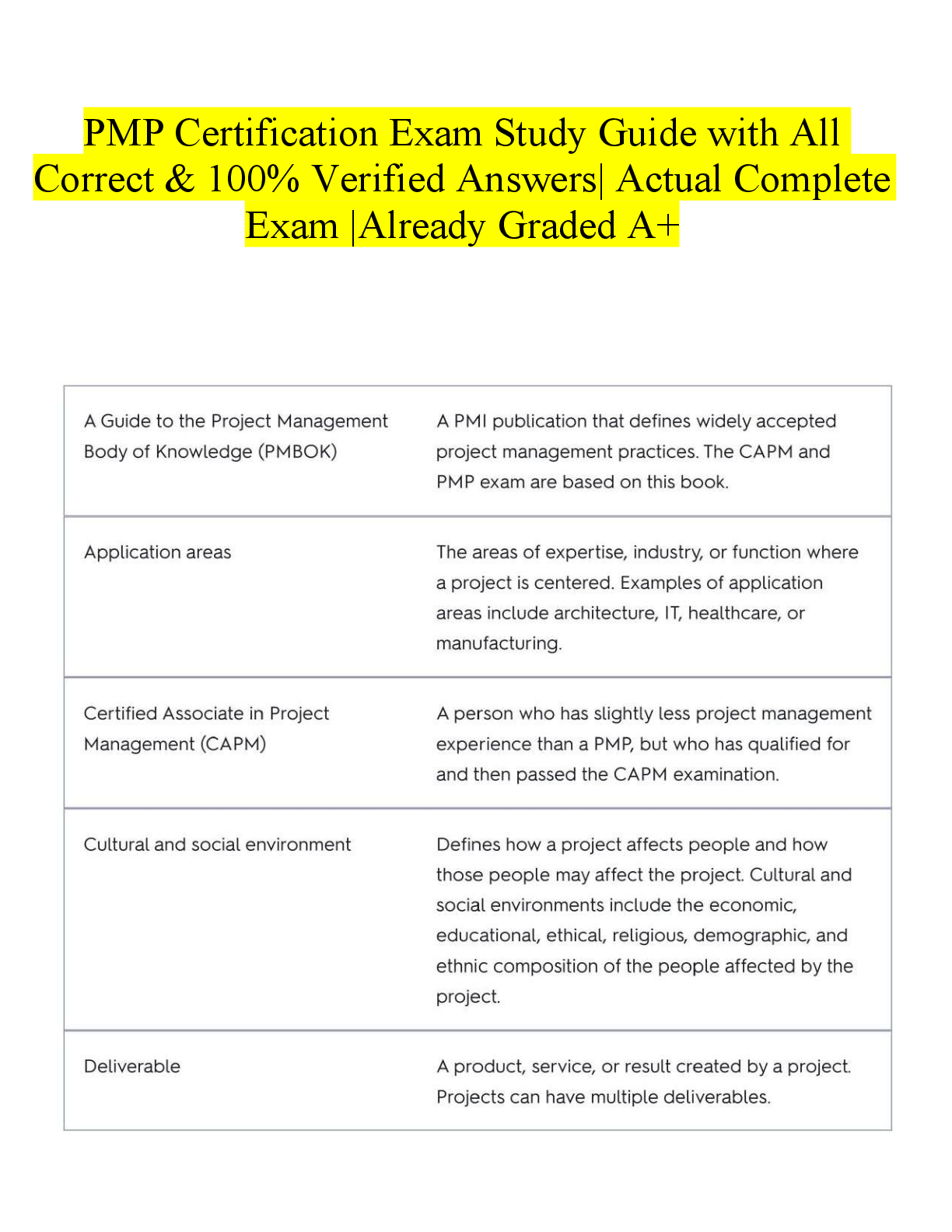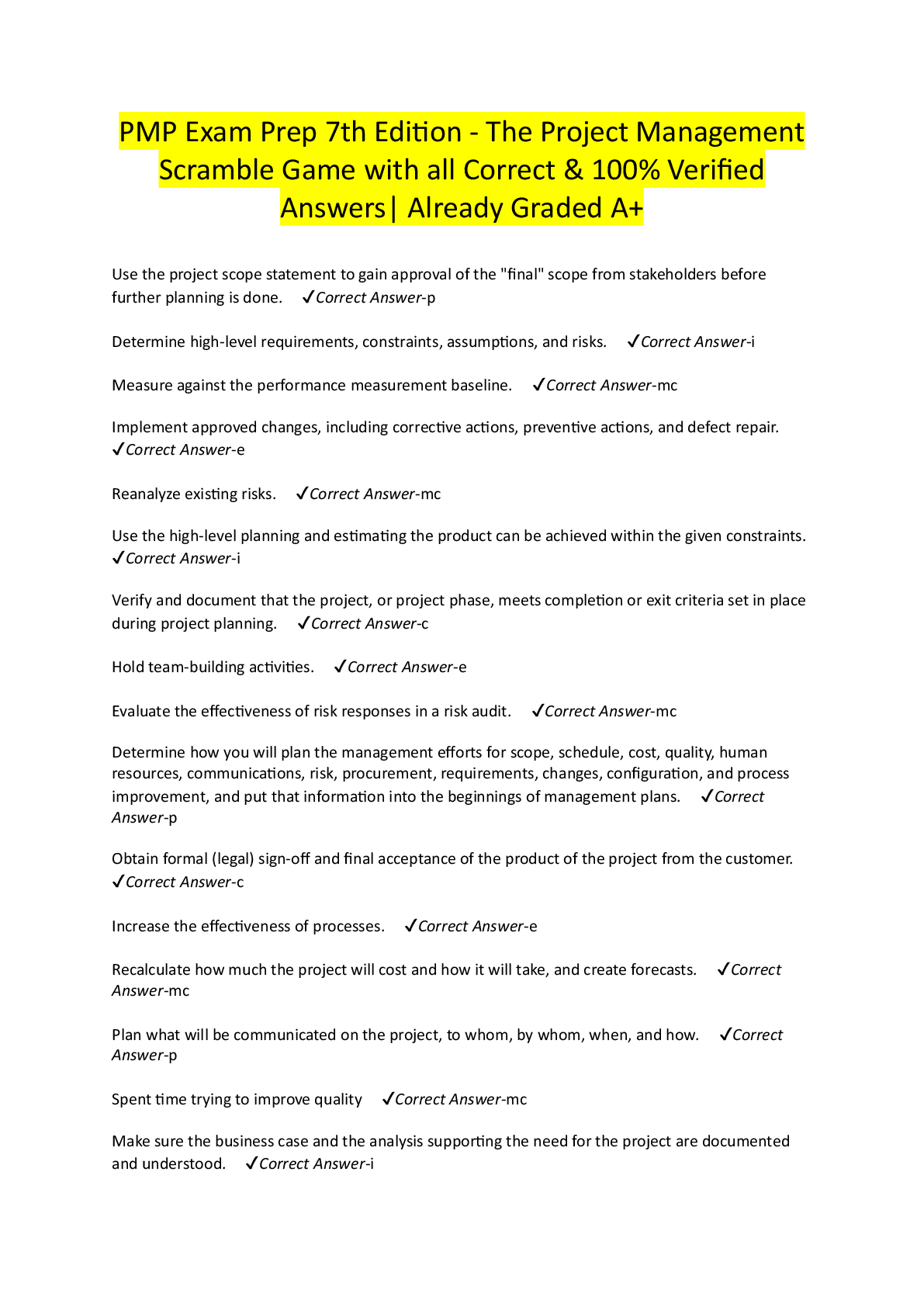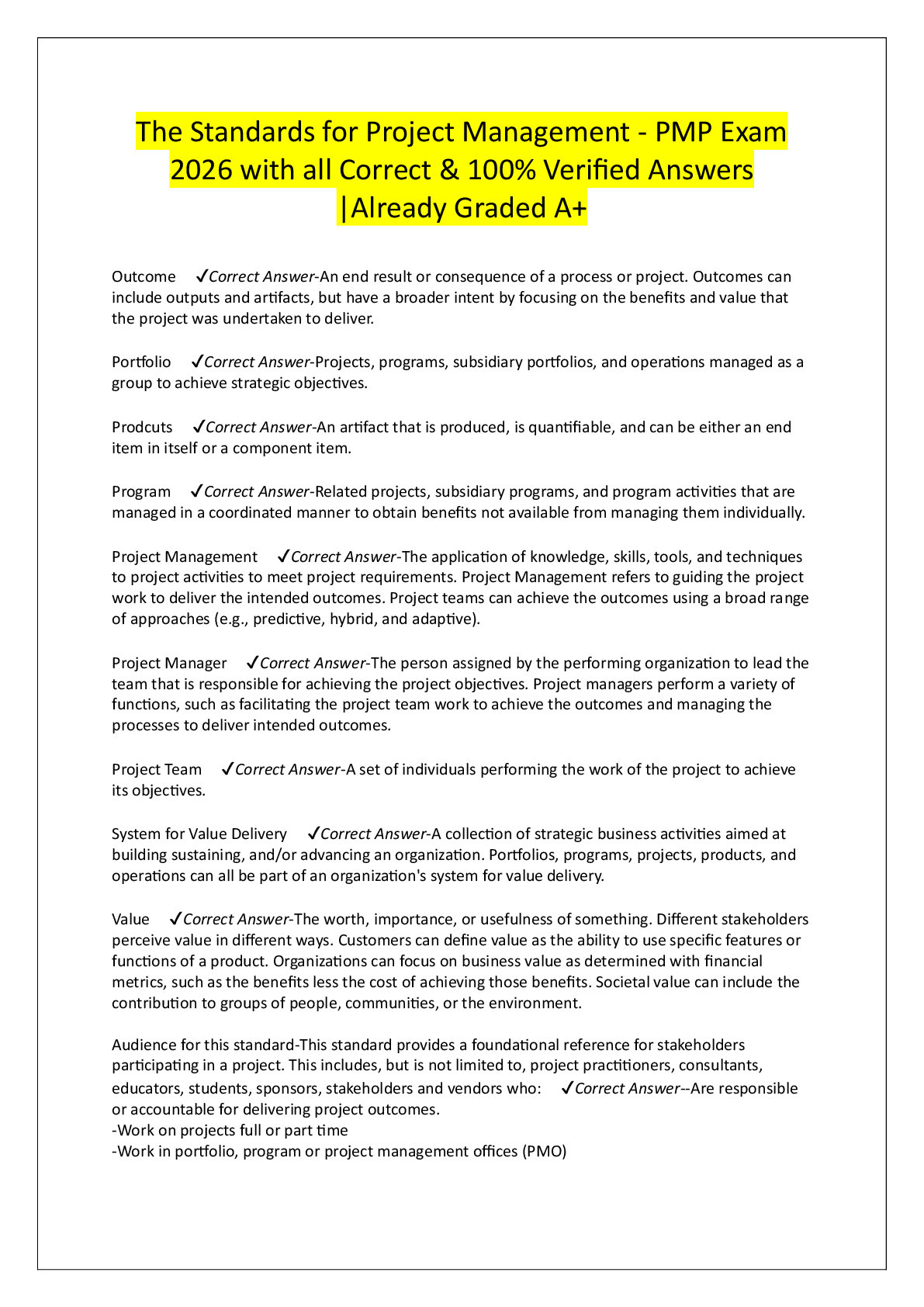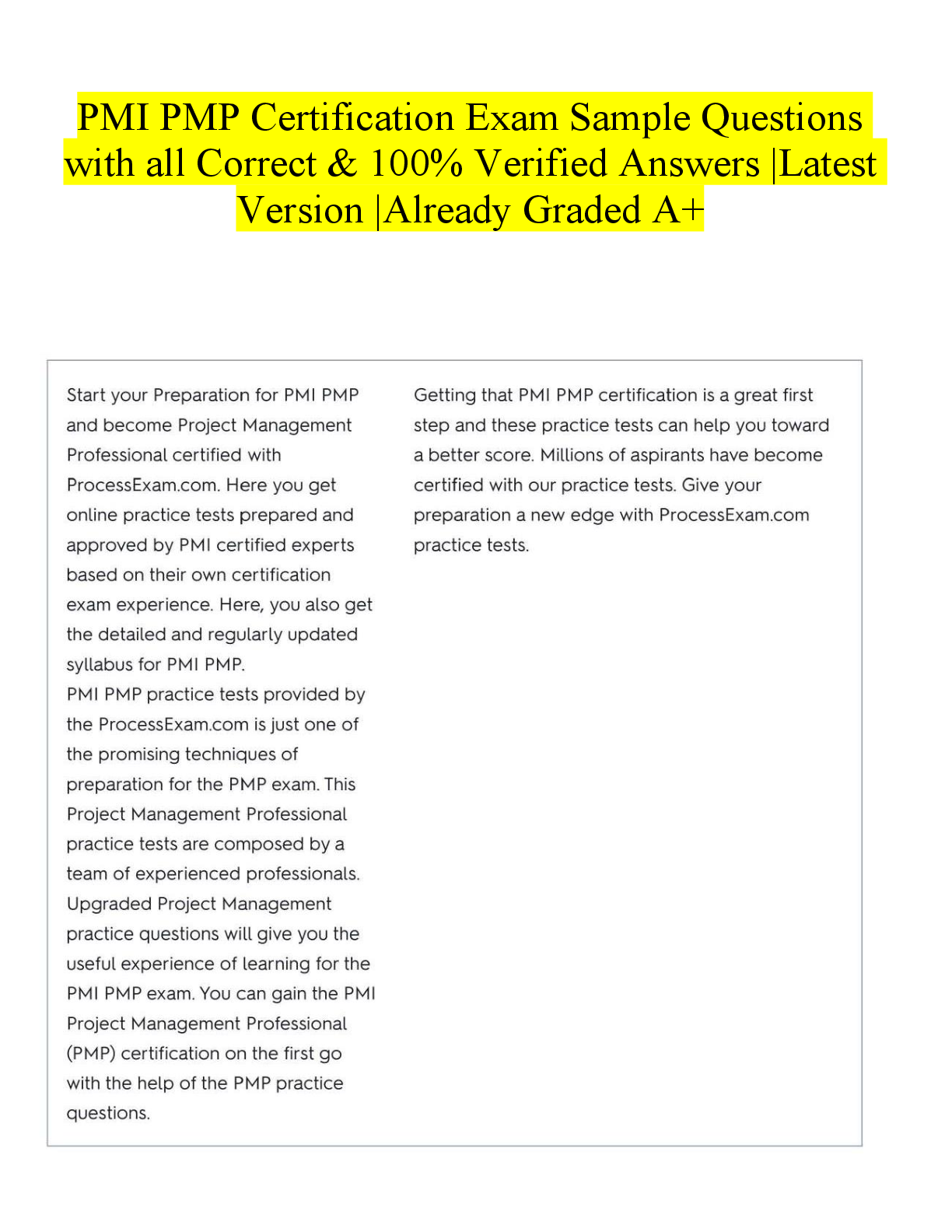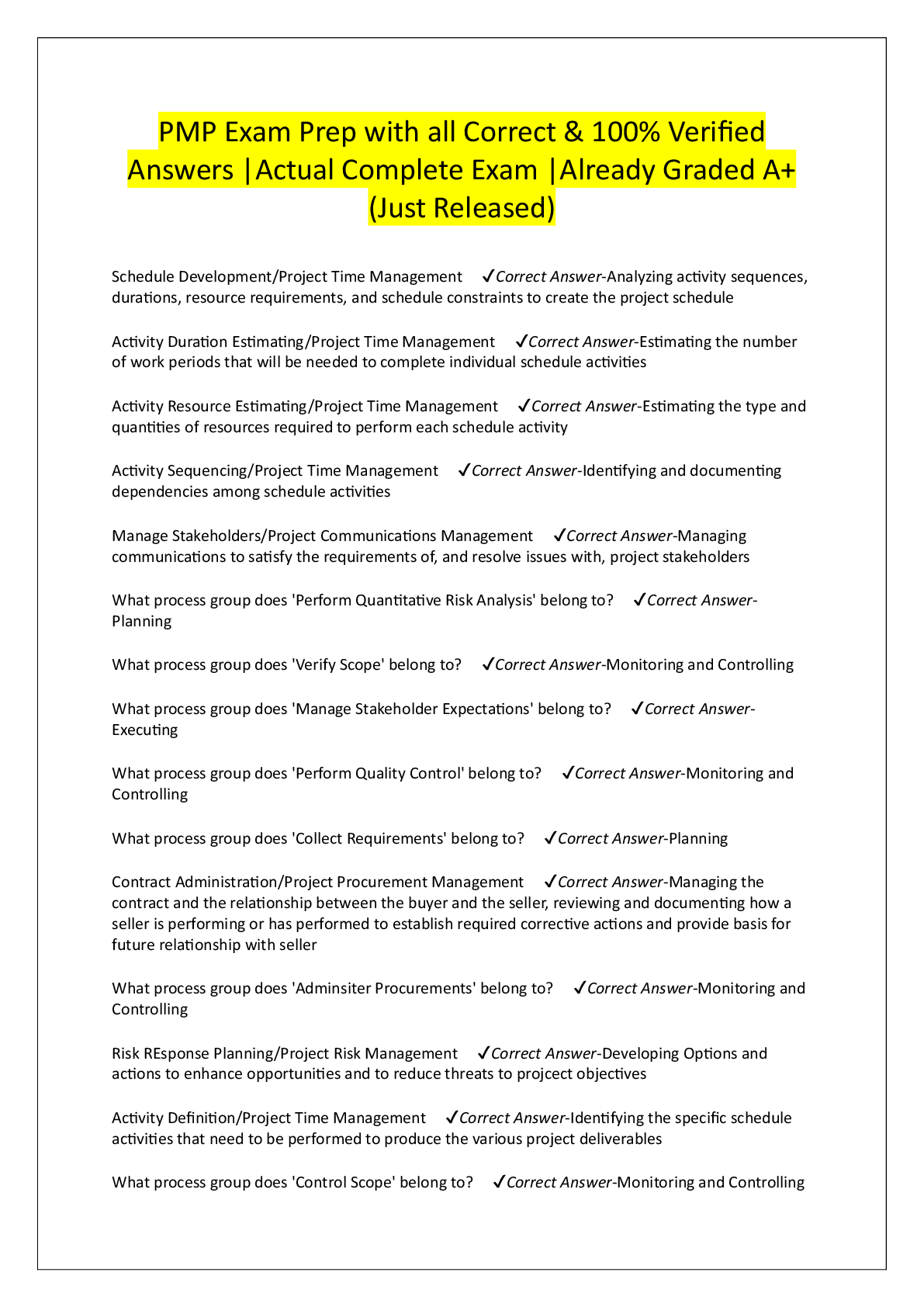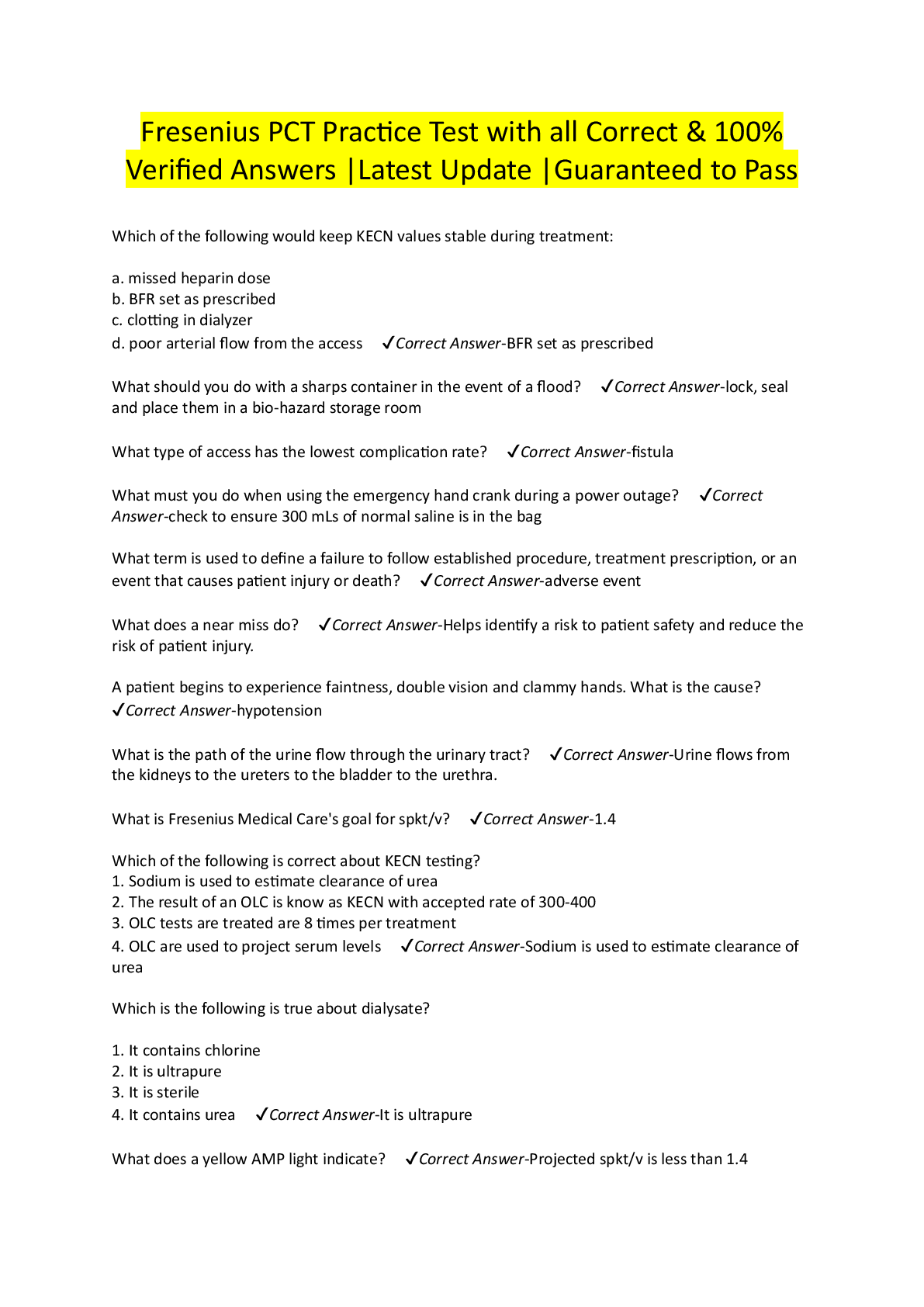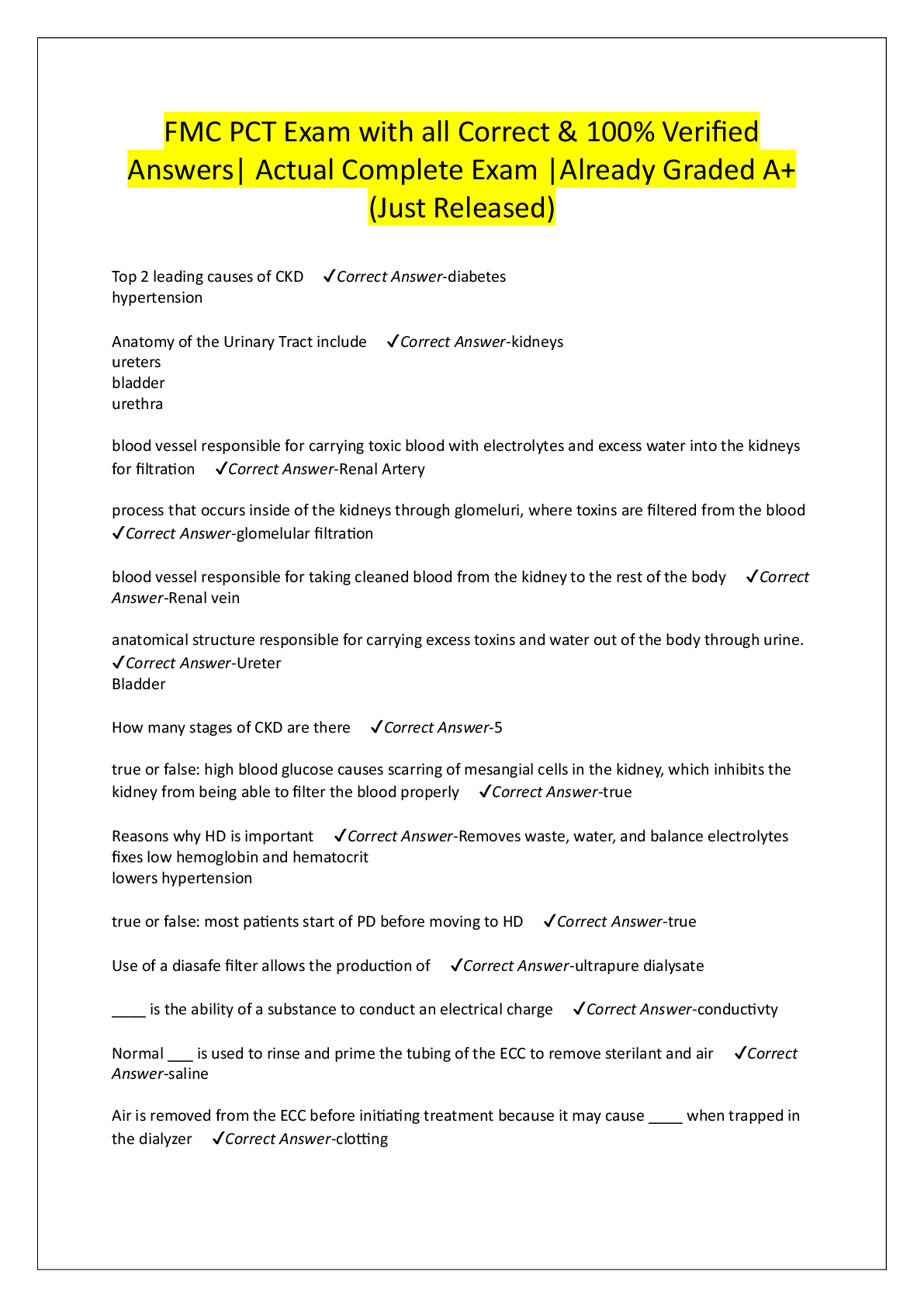HLTH 216 ATI RN COMPREHENSIVE PREDICTOR 2020 – Clarke University / HLTH216 ATI RN COMPREHENSIVE PREDICTOR 2020
Document Content and Description Below
HLTH 216 ATI RN COMPREHENSIVE PREDICTOR 2020 – Clarke University
ATI RN COMPREHENSIVE PREDICTOR 2020 REMEDIATION
ϖ Management of Care – (9)
¬ Advance Directives/Self-Determination/Life Plan
...
ning – (1)
♣ Professional Responsibilities: Client Teaching About Do-Not-Resuscitate Orders (Active Learning Template – Basic Concept, RM Leadership 7.0 Chp. 3)
• Unless a do not resuscitate (DNR) or allow natural death (AND) prescription is written, the nurse should initiate CPR when a client has no pulse or respirations. The written prescription for a DNR or AND must be placed in the client’s medical record. The provider consults the client and the family prior to administering a DNR or AND.
¬ Client Rights – (1)
♣ Coordinating Client Care: Appropriate Action When a Client Leaves Against Medical Advice (Active Learning Template – Basic Concept, RM Leadership 7.0 Chp. 2)
• A client who leaves a facility without a prescription for discharge from the provider is considered leaving against medical advice (AMA). A client who is legally competent has the legal right to leave the facility at any time. The nurse should immediately notify the provider. If the client is at risk for harm, it is imperative that the nurse explain the risk involved in leaving the facility. The individual should sign a form relinquishing responsibility for any complications that arise from discontinuing prescribed care. The nurse should document all communication, as well as the specific advice that was provided for the client. A nurse who tries to prevent the client from leaving the facility can face legal charges of assault, battery, and false imprisonment.
¬ Collaboration with Interdisciplinary Team – (1)
♣ Coordinating Client Care: Information to Report to Occupational Therapist (Active Learning Template – Basic Concept, RM Leadership 7.0 Chp. 2)
• Patient’s condition and current status; any medications the patient is on; patient’s tolerance level for pain; any assistive devices the patient uses
¬ Confidentiality/Information Security – (1)
♣ Professional Responsibilities: Protecting Confidential Client Information (Active Learning Template – Basic Concept, RM Leadership 7.0 Chp. 3)
• It is essential for nurses to be aware of the rights of clients in regard to privacy and confidentiality. Facility policies and procedures are established in order to ensure compliance with HIPAA regulations. It is essential that nurses know and adhere to the policies and procedures. HIPAA regulations also provide for penalties in the event of noncompliance with the regulations.
¬ Continuity of Care – (1)
♣ Information Technology: Preparing a Change-of-Shift Report (Active Learning Template – Basic Concept, RM FUND 9.0 Ch 5)
• Nurses give this report at the conclusion of each shift to the nurse assuming responsibility for the clients. Formats include face to face, audiotaping, or presentation during walking rounds in each client’s room (unless the client has a roommate or visitors are present). An effective report should: include significant objective information about the client’s health problems; proceed in a logical sequence; include no gossip or personal opinion; relate recent changes in medications, treatments, procedures, and the discharge plan
¬ Legal Rights and Responsibilities – (1)
♣ Professional Responsibilities: Understanding Regulations for Nursing Scope of Practice (Active Learning Template – Basic Concept, RM Leadership 7.0 Chp. 3)
• Standards of care guide, define, and direct the level of care that should be given by practicing nurses. They also are used in malpractice lawsuits to determine if that level was maintained. Nurses should refuse to practice beyond the legal scope of practice and/or outside of their areas of competence regardless of reason (staffing shortage, lack of appropriate personnel). Nurses should use the formal chain of command to verbalize concerns related to assignment in light of current legal scope of practice, job description, and area of competence.
¬ Performance Improvement (Quality Improvement) – (1)
♣ Maintaining a Safe Environment: Demonstrating Quality and Safety Education for Nurses Competencies (Active Learning Template – Basic Concept, RM Leadership 7.0 Chp. 4)
• Safe use of equipment refers to appropriate operation of health care-related equipment by trained staff. Equipment-related injuries can occur as a result of malfunction, disrepair, or mishandling of mechanical equipment. Nurses must ensure that they have the competence necessary to use equipment for tasks that fall within their scope of practice. Nurses should use equipment only after receiving sufficient instruction. Equipment should be regularly inspected by the engineering or maintenance department and by the user prior to use. Faulty equipment (frayed cords, disrepair) can start a fire or cause an electrical shock and should be removed from use and reported immediately per agency policy.
¬ Referrals – (2)
♣ Alzheimer’s Disease: Resources for Home Care (Active Learning Template – System Disorder, RM AMS RN 10.0 Chp 8)
• Refer to social services and case managers for long-term/home management, Alzheimer’s Association, community outreach programs, and support groups
♣ Nutrition and Oral Hydration: Priority Finding Following an Ischemic Stroke (Active Learning Template – System Disorder, RM FUND 9.0 Ch 39)
• Identify if someone has dysphagia, this patient will need pureed foods; clear and full liquids plus pureed meats, fruits and scrambled eggs, low residue: low in fiber
-
-
-
-
-
-
-
-
• Monitor for manifestations of CNS effects, and notify the provider if they occur
• Advise clients to maintain good oral hygiene (dental flossing, massaging gums). Folic acid supplements can decrease the occurrence.
• Stop medication if rash develops.
• Administer at slow IV rate (no faster than 50 mg/min) and in dilute solution to prevent adverse cardiovascular effects. Avoid administering to a client who has sinus bradycardia, sinoatrial block, or Stokes-Adams syndrome
• Instruct client to report changes. Encourage the client to consume adequate amounts of calcium and vitamin D.
• Administer prophylactic vitamin K to the mother for 1 month before the infant is delivered.
¬ Ante/Intra/Postpartum and Newborn Care – (2)
♣ Complications Related to the Labor Process: Findings to Report to the Provider (Active Learning Template – Basic Concept, RM MN RN 10.0 Chp 16)
• Prolapsed umbilical cord and Meconium-stained amniotic fluid
♣ Nursing Care and Discharge Teaching: Circumcision (Active Learning Template – Therapeutic Procedure, RM MN RN 10.0 Chp 26)
• Circumcision is the surgical removal of the foreskin of the penis. It is a personal choice made by the newborn’s family for reasons of health and hygiene, religious conviction (Jewish male on eighth day after birth), tradition, culture, or social norms. Parents should make a well-informed decision in consultation with the provider. Circumcision should not be done immediately following birth because the newborn’s level of vitamin K is at a low point, and the newborn would be at risk for hemorrhage.
¬ Health Promotion/Disease Prevention – (2)
♣ Pediatric Emergencies: Planning Education About Sudden Infant Death Syndrome (Active Learning Template – Basic Concept, RM NCC RN 10.0 Chp 43)
• Teach the family how to reduce the risk of SIDS: place the infant on the back for sleep; avoid exposure to tobacco smoke; prevent overheating; use a firm, tight-fitting mattress in the infant’s crib; remove pillows, quilts, and stuffed animals from the crib during sleep; ensure that the infant’s head is kept uncovered during sleep; offer pacifier at naps and night; encourage breastfeeding; avoid co-sleeping; maintain immunizations up to date.
-
-
-
-
-
-
-
-
-
-
♣ Electrocardiography and Dysrhythmia Monitoring: Purpose of Telemetry (Active Learning Template – Diagnostic Procedure, RM AMS RN 10.0 Chp 28)
• Continuous cardiac monitoring
¬ Illness Management – (3)
♣ Cancer and Immunosuppression Disorders: Teaching About Food Safety and Preparation for a Client Who Has AIDS (Active Learning Template – System Disorder, RM Nutrition 6.0 Chp. 16)
• The body’s response to the inflammatory and immune processes associated with HIV increases nutrient requirements. Malnutrition is common and is one cause of death in clients who have AIDS.
♣ Chronic Obstructive Pulmonary Disease: Dietary Teaching (Active Learning Template – System Disorder, RM AMS RN 10.0 Chp 22)
• Encourage the client to drink plenty of fluids to promote hydration. Encourage the client to take glucocorticoids with food.
♣ Esophageal Disorders: Anticipated Prescription for a Client Who Has Esophageal Varices (Active Learning Template – System Disorder, RM AMS RN 10.0 Chp 48)
• Prokinetics – metoclopramide increases the motility of the esophagus and stomach
¬ Medical Emergencies – (3)
♣ Electrocardiography and Dysrhythmia Monitoring: Unstable Ventricular Tachycardia (Active Learning Template – System Disorder, RM AMS RN 10.0 Chp 28)
• Defibrillation: ventricular fibrillation or pulseless ventricular tachycardia
• Cardioversion: elective treatment of atrial dysrhythmias, supraventricular tachycardia, and ventricular tachycardia with a pulse. Cardioversion is the treatment of choice for clients who are symptomatic
♣ Home Safety: Caring for a Client Who Has Frostbite (Active Learning Template – System Disorder, RM FUND 9.0 Ch 13)
• Occurs when the body is exposed to freezing temperatures. Common sites include the earlobes, tip of the nose, fingers, and toes. Frostbite presents as white, waxy areas on exposed skin. Tissue injury occurs. Frostbite an be full- or partial-thickness. Warm the affected area in 37 degrees to 42 degrees Celsius water bath. Provide pain medication. Administer a tetanus vaccination.
♣ Nursing Care for a Client During Stages of Labor: Interventions for a Client Who Has a Uterine Tachysystole (Active Learning Template – Medication, RM MN RN 10.0 Chp 14)
• Assess maternal blood pressure and pulse every 15 min for the first 2 hr and determine the temperature at the beginning of the recovery period, then assess every 4 hr for the first 8 hr after birth, then at least every 8 hr
¬ Unexpected Response to Therapies – (1)
♣ Medical Conditions: Magnesium Sulfate Toxicity (Active Learning Template – Medication, RM MN RN 10.0 Chp 9)
• Signs: absence of patellar deep tendon reflexes; urine output less than 30 mL/hr; respirations less than 12/min; decreased level of consciousness; cardiac dysrhythmias
• If toxicity is suspected: immediately discontinue infusion; administer antidote calcium gluconate or calcium chloride; prepare for actions to prevent respiratory or cardiac arrest
[Show More]
Last updated: 3 years ago
Preview 1 out of 19 pages
.png)












 – University of the People.png)







